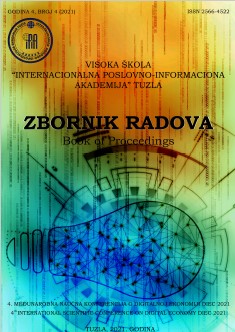CROWDSOURCING MODELS IN HIGHER EDUCATION
CROWDSOURCING MODELS IN HIGHER EDUCATION
Author(s): Anida Zahirović Suhonjić, Adnana BeganlićSubject(s): Higher Education , ICT Information and Communications Technologies, Distance learning / e-learning, Pedagogy
Published by: Internacionalna poslovno – informaciona akademija
Keywords: crowdsourcing; higher education; crowdteaching; crowdlearning; crowdfunding; crowdsensing;
Summary/Abstract: Crowdsourcing refers to the distribution of tasks between a group of people with the aim of solving a problem or completing a task. It is a collaborative model that uses different technologies to connect thpe “crowd” involved in the problem solving. This model was originally developed as an innovative business model, however, it later found its use in various fields including education. The aim of this paper is to determine which models of crowdsourcing can be used in education and which models are suitable for higher education. In addition, the aim is to determine the benefits of applying the crowdsourcing models in higher education for all participants in this process. Some of the models are crowdteaching, crowdlearning, crowdsensing, etc. Some of these models are intended for students, some are for teaching staff. There are also models that seek to use the crowd to raise funds to support a particular educational goal. Innovative approach to applying crowdsourcing in education include smart technologies.
Journal: Zbornik radova Međunarodne naučne konferencije o digitalnoj ekonomiji DIEC
- Issue Year: 4/2021
- Issue No: 4
- Page Range: 213-221
- Page Count: 9
- Language: English

